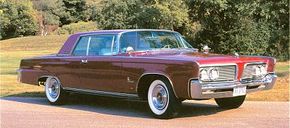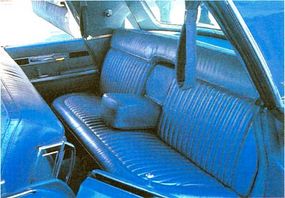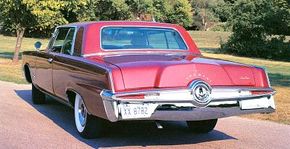The 1964-1966 Imperial was part of a move by Chrysler in the first half of the 1960s where it dispensed with design and engineering heroics in favor of careful market planning, unified "committee control" at the top, more conservative styling, and vast -- sometimes rash -- expansion.
Advertisement
To his credit, president Lynn Townsend had smoothed the turbulent waters of the Tex Colbert/ Bill Newberg administrations, and began concentrating on the business of making money. If a trend away from Chrysler's innovation and independence during the 1950s could be seen in all this, no one was complaining. After all, Chrysler was giving the public what it wanted.
The 1964 Imperials were the first models designed by someone other than Virgil Exner since Imperial had become a separate make in 1955. The "someone" was Elwood Engel, who had come over from Ford to replace Exner in 1961, and who had begun to influence surface styling of Chrysler products as early as 1963.
Engel drastically revised the 1964 Imperial line. The old silhouette was now eliminated below the beltline, as well as above (the transformation had begun with a different roofline in 1963). The car was squared off, very much like the Lincoln Continental with which Engel had been closely associated. Like the Continental, its fenderline was traced in brightwork and there were lots of square corners. A divided grille was adopted, and Exner's freestanding headlamps summarily dropped. The rear deck was revised, not quite eliminating Exner's spare tire outline.
The Custom Imperial line was canceled, leaving the Crown as the base model and the LeBaron the most expensive. Also dropped as unnecessary was the "Southampton" designation for pillarless models -- all Imperials were hardtops, except the convertible. The Crown Imperial limousine built by Ghia in Italy was available with either six or four side windows, and continued on the special 149½ Winch wheelbase.
Imperial had an excellent year with over 23,000 1964 Imperials built, 65 percent better than 1963 and the second best year on record. Under Engel, a Lincolnesque design philosophy had emerged: the luxury car, Engel said, should not suffer the indignity of a comprehensive annual restyle. Like Mercedes (and Elwood's own Continentals) Imperial design now merely evolved; it did not change significantly from one year to the next.
Continue to the next page to see the gradual evolution of the Imperial in 1965 and 1966.
For more information on cars:
- Classic Cars
- Muscle Cars
- Sports Cars
- Consumer Guide New Car Search
- Consumer Guide Used Car Search
Advertisement



